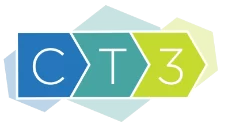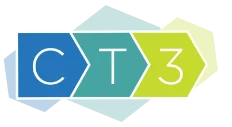In supporting k-12 schools across the nation for the last 14 years, I can’t tell you how many times I’ve entered a school building and questioned “why are doing this?” The most consistent response has been, “this is how we’ve always done it.” I would be remiss, if I didn’t show some grace, as the multiple challenges school leaders face, that are ever so present in our public schools, especially those schools in under-resourced districts across the nation. These ongoing challenges often prevent school leaders from analyzing what’s working, what isn’t, and focus efforts on doing more of what’s making an impact. According to a study by Leithwood et al. (2004), “leadership is second only to classroom instruction among all school-related factors that contribute to what students learn at school.” This underscores the necessity for school leaders to concentrate on the high-impact practices that directly influence student achievement, which requires leaders to abandon low-value practices. But…What constitutes a low value practice?
According to Farmer et al. (2018) low-value practices are those practices that:
- have not been shown to be effective and impactful,
- are less effective or impactful than another available practice,
- cause harm, or
- are no longer necessary.
A recent google search, which quickly resulted in entering the rabbit hole of YouTube, led me to the concept of De-implementation, which caught my attention as a prescribed way of supporting school leaders on focusing on those high-yield practices and reducing and/or eliminating the rest.
Recently, the concept of de-Implementation, originally rooted in the medical field, has emerged as a crucial practice in various fields, including education. De-implementation focuses on identifying and discontinuing practices that are ineffective, outdated, or potentially harmful. This practice is now being adapted in public school education to improve teaching methods, optimize resource allocation, and enhance student outcomes.
Understanding De-Implementation in Medicine
De-implementation in the medical field involves the systematic process of reducing or eliminating medical interventions that are no longer supported by current evidence. These interventions may include outdated diagnostic tests, treatments, or procedures that do not provide significant benefits to patients or may even cause harm. The primary goal is to ensure that medical practices are based on the best available evidence, ultimately improving patient care and reducing unnecessary healthcare costs.
For example, the Choosing Wisely Campaign launched by the American Board of Internal Medicine (ABIM) Foundation, encourages healthcare providers to engage in conversations with patients about unnecessary tests and procedures. By promoting evidence-based practices, the campaign aims to reduce overuse and improve the quality of care.
De-Implementation in Public School Education
Inspired by the successes in the medical field, educators and policymakers are now exploring de-implementation in public school education. This approach involves critically examining existing educational practices, curricula, and policies to identify those that are ineffective or outdated. The objective is to phase out these practices and replace them with evidence-based strategies that better support student learning and well-being.
Steps in the De-Implementation Process
- Identification: Name those educational practices are no longer effective or beneficial. This can be achieved through data analysis, teacher feedback, and reviewing current research.
- Evaluation: Once identified, evaluate those practices based on impact on student achievement. This involves reviewing empirical evidence, considering expert opinions, and assessing the practical implications of continuing or discontinuing the practice.
- Decision-Making: After thorough evaluation, decisions are made regarding which practices should be de-implemented (partially reduced, replaced, or eliminated. This step requires collaboration among educators, administrators, and stakeholders to ensure a consensus on the best course of action.
Benefits of De-Implementation in Education
- Improved Student Outcomes: By discontinuing ineffective practices, schools can focus on strategies that truly enhance learning and development. This can lead to improved academic performance, better social-emotional health, and increased engagement.
- Resource Optimization: De-implementation helps schools allocate resources more effectively. Time, money, and effort can be redirected from outdated practices to initiatives that have a proven impact on student success.
- Professional Growth: Educators benefit from professional development opportunities that accompany the transition to new practices. This continuous learning fosters a culture of innovation and adaptability within the teaching profession.
Challenges and Considerations
While de-implementation offers significant benefits, it also presents challenges that need to be addressed:
- Resistance to Change: Educators and administrators may be resistant to abandoning long-standing practices, even when evidence suggests they are ineffective. Overcoming this resistance requires effective communication, professional development, and support systems.
- Evidence Availability: In some cases, there may be a lack of robust evidence to support the de-implementation of certain practices. Continuous research and data collection are essential to inform decision-making.
- Equity Concerns: Ensuring that de-implementation efforts do not disproportionately affect marginalized or underserved student populations is crucial. Equity considerations must be at the forefront of the process to avoid exacerbating existing disparities.
Conclusion
De-implementation, a practice that has proven valuable in the medical field, holds great promise for public school education. By systematically identifying and discontinuing ineffective practices, school administrators can focus their leadership efforts on practices that research shows will have the most significant impact on student achievement. According to research by Robinson, Lloyd, and Rowe (2008), “the impact of leadership on student outcomes is greater when leaders focus their efforts on teaching and learning.” This reinforces the idea that de-implementation should be guided by a strategic focus on practices that enhance instructional quality and student engagement.
As schools continue to adapt and innovate, the practice of de-implementation, supported by strategic leadership, will play a vital role in ensuring that educational practices are aligned with the best available evidence, ultimately leading to better outcomes for all students.
If you are interested in learning more about how CT3 supports school leaders De-Implementation of low-value practices and replacement of High-Yield Leadership strategies, check out our Results. Our Real-Time Leadership Coaching (RTLC) provides a tailored approach to meet your school’s needs, while providing Leadership support and accountability to help you reach the achievement you know is possible for your students!


